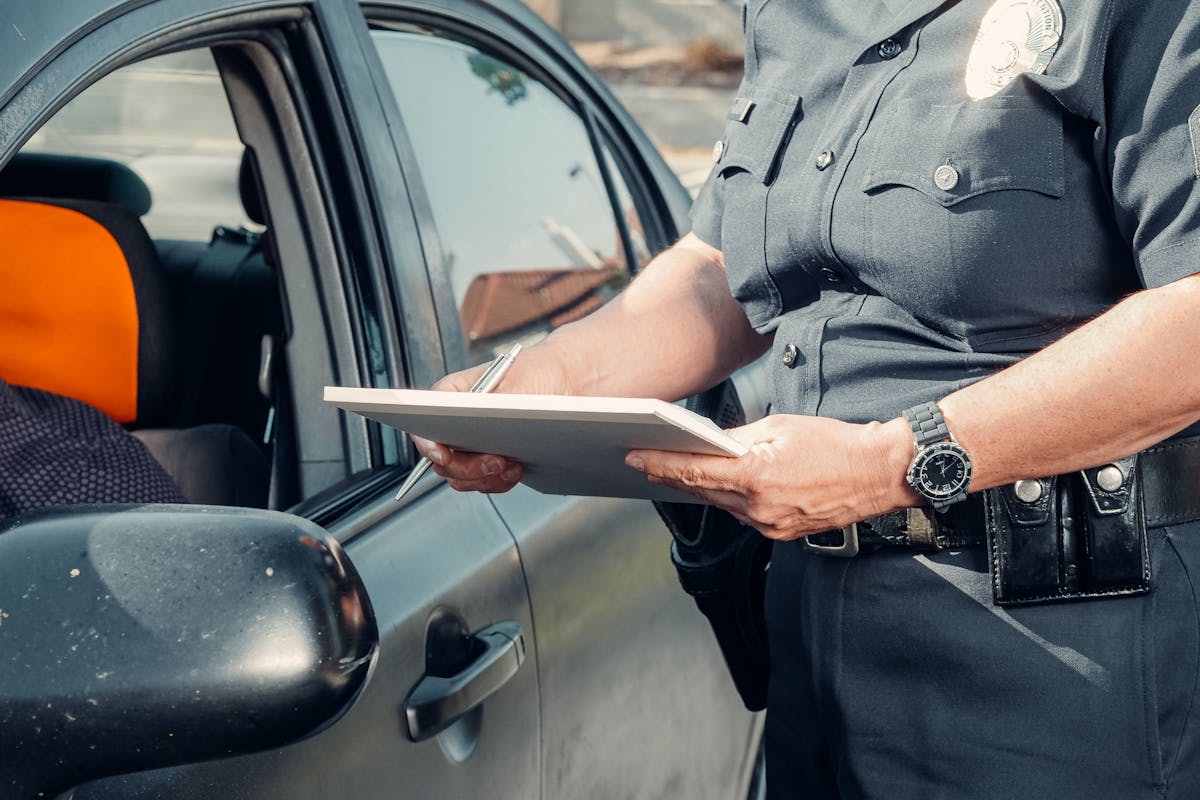A hit and run accident lawyer plays an important role in assisting victims who have been left helpless after an incident where the responsible driver has fled the scene. These legal professionals offer essential guidance in maneuvering the complexities of legal claims and insurance negotiations. With their expertise, they aim to secure just compensation for the affected parties. Understanding the multifaceted responsibilities of such a lawyer is key to appreciating their value in these distressing situations.
Understanding Hit and Run Accidents
Although hit and run accidents are an unfortunate reality on the roads today, understanding their nature is essential for both prevention and legal recourse. These incidents occur when a driver involved in a collision leaves the scene without providing contact information or assistance to the injured. Proper accident reporting is vital in these cases to aid law enforcement in tracking down the responsible parties. Victim support is another significant component, as those affected often require both medical and emotional assistance. Various organizations and community programs offer resources to help victims cope and recover. By improving accident reporting mechanisms and enhancing victim support systems, communities can better address the challenges posed by hit and run accidents, ultimately reducing their frequency and impact.
Legal Implications for Fleeing Drivers
Fleeing the scene of an accident carries significant legal implications, primarily involving criminal charges and civil liability. Criminal charges for hit-and-run offenses can range from misdemeanors to felonies, depending on the severity of the incident and any resulting injuries or fatalities. Additionally, fleeing drivers may face civil liability for damages caused, with the statute of limitations dictating the timeframe within which legal actions must be initiated.
Criminal Charges Overview
When involved in a hit and run accident, drivers who choose to flee the scene face serious legal consequences that can greatly impact their lives. The act of leaving the accident site demonstrates criminal intent, a key factor in prosecuting offenders. Legal systems typically classify hit and run as a criminal offense, often resulting in charges that range from misdemeanors to felonies. The severity of charges depends on factors such as injuries caused, property damage, and prior offenses. Defendants might present legal defenses, such as lack of awareness of the collision, to mitigate charges. However, these defenses must be substantiated with credible evidence. Ultimately, fleeing drivers risk facing penalties that include fines, imprisonment, and long-term impacts on their driving records.
Civil Liability Consequences
A driver involved in a hit and run accident not only faces criminal charges but also potential civil liability consequences. Civil liability arises when the victim of the accident files accident claims against the driver for damages incurred. The fleeing driver may be held financially responsible for medical expenses, property damage, and other losses experienced by the victim. In civil court, the burden of proof is lower than in criminal proceedings, often requiring the victim to demonstrate that the driver’s negligence directly caused the harm. Successful accident claims could lead to substantial financial penalties for the driver. Additionally, insurance companies may deny coverage for hit and run incidents, further increasing the driver’s financial burden. Legal representation becomes essential in maneuvering these complex legal ramifications.
Statute of Limitations
While civil liabilities pose significant challenges for drivers involved in hit and run incidents, understanding the statute of limitations is equally important for determining the legal timeframe for potential lawsuits. Statute clarification is vital, as it dictates how long victims have to initiate legal proceedings against the fleeing driver. This timeframe varies by jurisdiction, with some states allowing victims two years to file a claim, while others permit longer periods. Filing deadlines are strictly enforced, and missing these can result in the inability to pursue legal action. For fleeing drivers, understanding these deadlines is essential for evaluating potential exposure to lawsuits. Legal counsel can provide essential guidance on these deadlines, ensuring both victims and defendants are adequately informed about their rights and obligations.
Steps to Take After a Hit and Run
In the aftermath of a hit and run accident, individuals should prioritize gathering evidence promptly, as this can be essential for any subsequent legal proceedings or insurance claims. Capturing details such as the vehicle’s make, model, and license plate number, along with eyewitness accounts, can greatly aid in identifying the fleeing driver. Additionally, contacting authorities immediately guarantees that the incident is officially documented and initiates an investigation to locate the responsible party.
Gather Evidence Promptly
After a hit and run accident, promptly gathering evidence is essential for building a strong case and facilitating legal proceedings. Evidence preservation begins at the scene, where every detail can be vital. Photographs of the accident site, vehicle damage, and any visible injuries should be taken immediately to capture the scene accurately. Witness statements are important; individuals who observed the incident may provide critical information about the vehicle involved or the circumstances of the collision. Collecting contact information from witnesses guarantees that their observations can be documented later. Additionally, noting environmental conditions, such as weather and lighting, contributes to a thorough understanding of the event. This systematic approach to evidence collection enhances the likelihood of identifying the responsible party and pursuing legal recourse.
Contact Authorities Immediately
Promptly contacting authorities is crucial following a hit and run accident. Immediate police involvement guarantees the event is documented, facilitating subsequent legal and insurance processes. Reporting procedures require the victim or a witness to dial emergency services, providing details such as the accident location, time, and any descriptions of the fleeing vehicle. Authorities prioritize these incidents due to potential threats to public safety and the legal implications for the driver at fault.
Law enforcement’s prompt response aids in gathering evidence before it dissipates and increases the likelihood of apprehending the responsible party. Additionally, an official police report is an essential document for insurance claims, reinforcing the importance of adhering to reporting procedures. Timely action can greatly impact the resolution of such cases.

The Role of a Hit and Run Lawyer
When dealing with the aftermath of a hit and run accident, a lawyer specializing in this field plays an essential role in maneuvering the legal complexities that ensue. Legal representation becomes vital as victims often face challenges in identifying the responsible party and pursuing compensation. A hit and run lawyer is adept at traversing these intricate legal frameworks, ensuring that the victim’s rights are protected. They provide expert guidance through the procedural labyrinth, advising clients on the best course of action. Their role involves evaluating liability, negotiating with insurance companies, and, if necessary, representing the victim in court. By offering thorough legal support, these lawyers aim to secure fair compensation for the victim, addressing medical expenses, property damage, and emotional distress.
Gathering Evidence for Your Case
Building a strong case in the aftermath of a hit and run incident necessitates meticulous evidence gathering, a process that can greatly influence the outcome of legal pursuits. Evidence types are diverse and include physical evidence from the scene, vehicle damage, and any available surveillance footage. Witness statements play an essential role, offering firsthand accounts that can corroborate the sequence of events. Documenting these statements promptly enhances their reliability. Additionally, photographs of the scene and any injuries sustained provide visual documentation which supports the case. Skid marks, debris, and other environmental factors are analyzed to reconstruct the incident’s dynamics. Collecting thorough evidence not only aids in identifying the perpetrator but also strengthens the overall legal argument, increasing the likelihood of a favorable resolution.
Working With Insurance Companies
Maneuvering the complexities of working with insurance companies after a hit and run incident involves a strategic approach to guarantee fair compensation. Engaging in insurance negotiations requires an understanding of the intricate claim processes. The victim must initiate a claim with their own provider, especially if the perpetrator remains unidentified. This involves submitting detailed documentation, including police reports and medical records, which substantiate the claim. Throughout the claim processes, insurers may challenge the validity of claims or attempt to limit payouts. Consequently, a meticulous approach is needed to counteract potential disputes. Insurance negotiations involve evaluating policy terms, coverage limits, and potential deductibles. Successfully maneuvering these challenges can increase the likelihood of receiving appropriate compensation for damages incurred during the incident.
Pursuing Compensation for Victims
Pursuing compensation for victims of hit and run incidents demands an extensive understanding of legal avenues available to them. Victim rights play a vital role in determining potential outcomes, as these rights guarantee access to justice and reparation for damages incurred. Legal professionals specializing in these cases employ diverse compensation strategies tailored to the unique circumstances of each incident. These strategies often involve identifying available insurance policies, pursuing claims against unidentified drivers, or seeking restitution from crime victim compensation funds. The focus is on maximizing recovery by exploring all possible sources of compensation. In such cases, precise documentation and evidence collection are imperative to substantiate claims. Ultimately, obtaining compensation hinges on the effective application of legal knowledge and strategic negotiation.
Navigating the Court System
How can a victim effectively navigate the complexities of the court system following a hit and run incident? Understanding court procedures and familiarizing oneself with legal terminology are critical first steps. Victims must comprehend the various stages of a court case, from filing a lawsuit to presenting evidence. Familiarity with terms such as “plaintiff,” “defendant,” and “discovery” is essential for clear communication. Additionally, comprehending procedural rules, such as deadlines for filing documents, guarantees compliance and avoids unnecessary delays. Victims should also be aware of the potential need for expert testimony and how it fits into the court’s evidentiary requirements. By mastering these elements, victims can better manage their case’s trajectory within the legal system, enhancing their chances of a favorable outcome.
Finding the Right Legal Representation
Identifying suitable legal representation is essential for victims of hit and run incidents seeking justice and compensation. Choosing representation involves carefully evaluating a lawyer’s qualifications and track record. Reviewing experience is a critical component; a lawyer who specializes in hit and run cases is likely to be more knowledgeable about the nuances involved. Potential clients should investigate the lawyer’s history of success in similar cases, including settlement amounts and verdicts. Additionally, examining client reviews and testimonials can provide insights into the lawyer’s communication skills and reliability. It is also advisable to confirm the lawyer’s standing with the bar association and any disciplinary records. Ultimately, selecting the right attorney can greatly impact the outcome of a hit and run case.
Frequently Asked Questions
Can a Hit and Run Claim Be Filed Without a Police Report?
Filing a hit and run insurance claim without a police report is challenging, but possible. Legal representation can help navigate requirements, gather evidence, and communicate with insurers to substantiate claims, emphasizing the necessity of professional assistance.
How Long Do You Have to Report a Hit and Run Accident?
The reporting deadlines for a hit and run accident vary by jurisdiction, but prompt notification is essential. Accident documentation, such as witness statements and photographs, should be collected immediately to support potential legal and insurance claims.
What if the Fleeing Driver Is Never Identified or Caught?
If the fleeing driver is never identified, the victim may need to rely on their own insurance coverage, specifically uninsured motorist coverage, to cover damages. This coverage can provide financial protection in such situations.
Are There Any Penalties for Falsely Accusing Someone of a Hit and Run?
False accusations can lead to significant legal consequences, including defamation lawsuits and potential criminal charges. The justice system aims to protect individuals from wrongful claims, ensuring that accusations are substantiated by evidence before legal actions are pursued.
Can You Claim Compensation if You Were Partially at Fault?
In situations involving partial fault, individuals may still pursue compensation. Key considerations include negligence factors and fault determination, which influence the extent of recoverable damages. Jurisdictions vary in handling contributory and comparative negligence claims, affecting outcomes.

